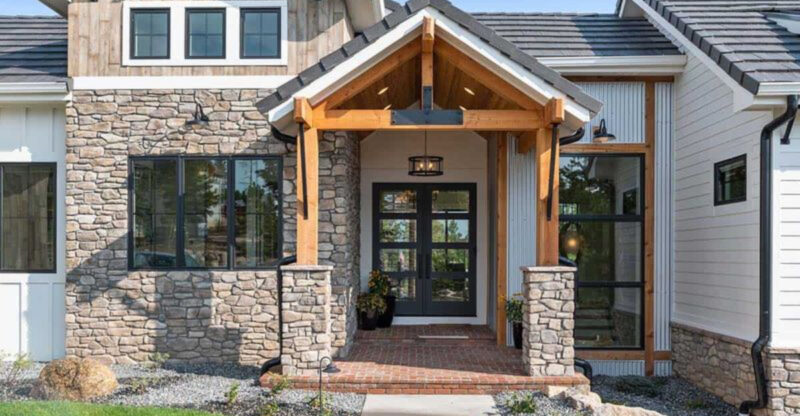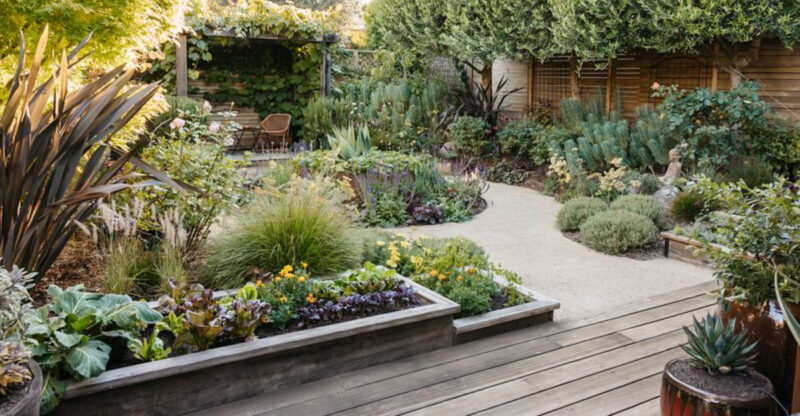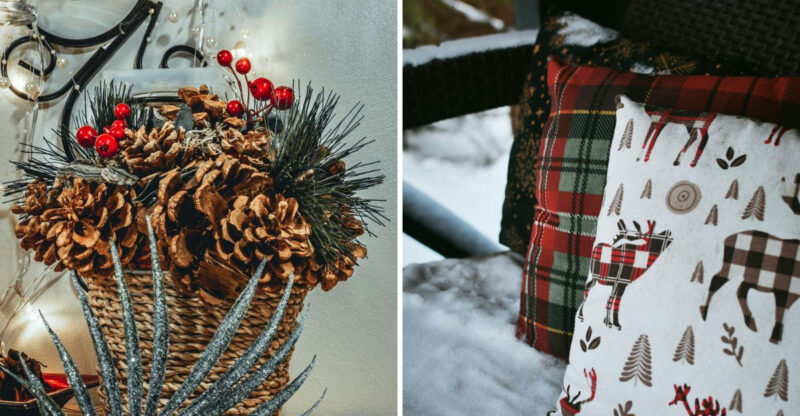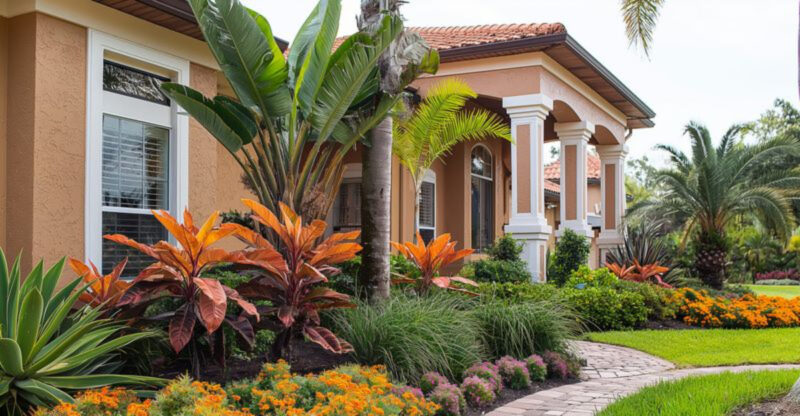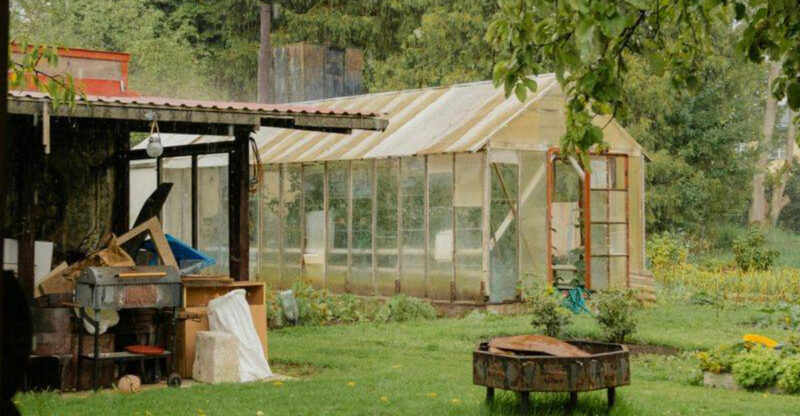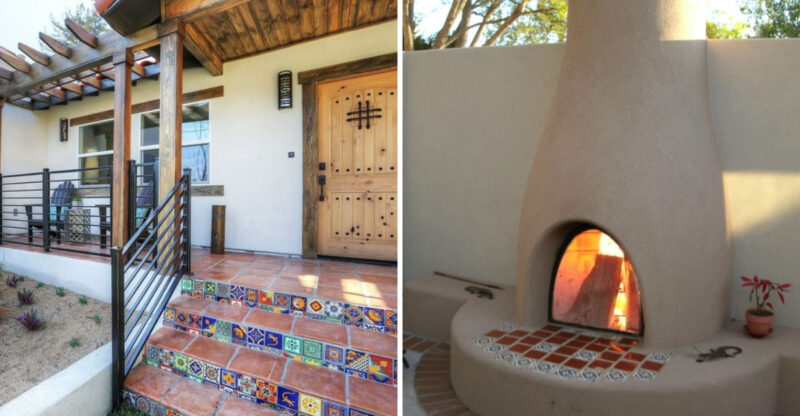12 Garden Design Trends Shaping 2026 In New York
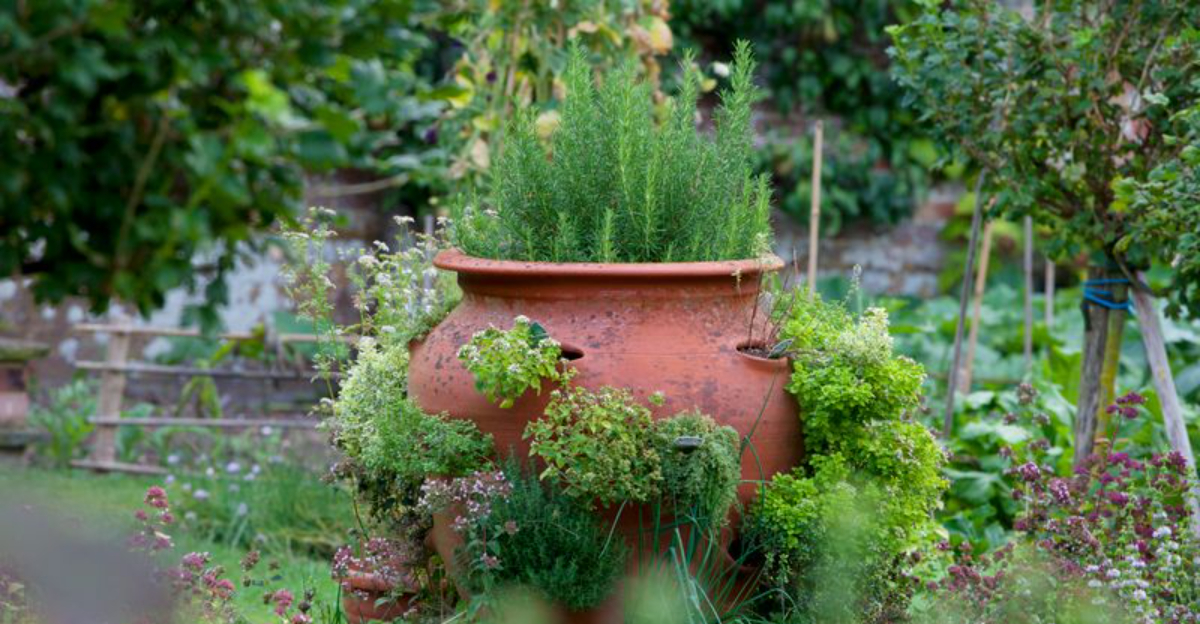
Gardens are becoming sanctuaries of purpose and style, shaped by a renewed appreciation for nature and design. In New York, where space is precious and seasons are bold, outdoor living is turning thoughtful and expressive.
Rooftop terraces, stoop planters, and suburban backyards alike are evolving into layered ecosystems that balance form and function. The trend isn’t just about growing plants – it’s about cultivating calm, sustainability, and a deeper connection to daily life.
1. Native And Pollinator Friendly Planting
Gardens filled with native plants bring butterflies, bees, and songbirds right to your doorstep. Species like asters and wild bergamot thrive without fussy care because they evolved alongside New York’s climate.
Pollinators need these flowers to survive, and watching them buzz from bloom to bloom adds life to any garden. Native choices also reduce water use and eliminate the need for harsh chemicals, making maintenance simpler for busy homeowners.
2. Rain Gardens And Stormwater Capture
Heavy downpours can overwhelm city drainage systems, but rain gardens offer a smart solution. Positioned in low spots, they collect runoff and filter it naturally through layers of soil and roots.
Plants like swamp milkweed, blue flag iris, and Joe-Pye weed tolerate wet feet while looking gorgeous in New York gardens. Beyond preventing flooding, these gardens recharge groundwater and keep pollutants out of rivers and streams, benefiting the entire neighborhood with minimal effort.
3. Drought Tolerant Climate Resilient Palettes
Summer heat waves are becoming more common, so gardeners are choosing plants that shrug off dry spells. Sedums, Russian sage, and ornamental grasses like little bluestem stay attractive even when rainfall is scarce.
These tough beauties store water in their leaves or develop deep roots that tap into moisture below the surface. Planting them means less time dragging hoses around and more time enjoying a garden that looks fresh all season long.
4. No Mow Meadows And Lawn Alternatives
Traditional lawns demand constant mowing, watering, and fertilizing, which is why many homeowners are trading grass for meadow-style plantings. Low-growing wildflowers and clover create a softer, more relaxed look that actually supports New York wildlife.
Once established, these alternatives need only an annual trim, freeing up weekends for better things. The result is a carpet of blooms that shifts with the seasons, offering color and texture that plain turf simply cannot match.
5. Small Space Terrace And Balcony Gardens
Even the tiniest New York balcony can become a green retreat with thoughtful planning. Compact shrubs, hanging baskets, and vertical planters maximize every inch without overwhelming the space.
Herbs like basil and rosemary thrive in pots, offering fresh flavor steps from the kitchen. Adding a small bistro set surrounded by potted blooms transforms an overlooked corner into a peaceful spot for morning coffee or evening relaxation, proving that size matters far less than creativity.
6. Container Clusters And Statement Pots
Grouping containers of varying heights and textures creates instant drama on patios and stoops. Oversized ceramic pots in bold colors or interesting finishes act as sculptural focal points, drawing the eye and anchoring the design.
Mixing different plant shapes – spiky grasses, trailing vines, and mounding flowers – adds depth and visual interest. Containers also offer flexibility, allowing gardeners to rearrange the display as plants grow or seasons change, keeping the look fresh and dynamic.
7. Vertical Gardens And Trellised Vines
When ground space is limited, growing upward opens new possibilities. Trellises, wall-mounted planters, and arbors support climbing roses, clematis, and even edible beans, adding lush greenery without claiming precious square footage.
Vertical gardens also provide privacy, shade, and a living backdrop for seating areas. Training vines along fences or walls softens hard surfaces and creates a sense of enclosure, turning narrow side yards or bare walls into verdant, inviting spaces.
8. Edible Landscaping And Herb Borders
Why settle for purely ornamental plants when edibles can be just as beautiful? Blueberry bushes offer spring flowers, summer fruit, and fiery fall foliage, while kale and Swiss chard add bold color to borders.
Herb borders filled with lavender, thyme, and oregano smell wonderful and provide fresh ingredients for cooking. Blending food plants into flower beds creates a New York garden that feeds both the body and the soul, proving that practicality and beauty go hand in hand.
9. Four Season Interest With Winter Structure
New York gardens should offer something beautiful every month, not just in summer. Ornamental grasses, evergreen shrubs, and plants with interesting bark or seed heads keep the landscape engaging when flowers fade.
Winterberry holly and red twig dogwood provide bright pops of color against snow, while evergreens anchor the design year-round. Planning for four-season interest means the garden remains a source of joy even on the coldest days, rewarding those who look out the window.
10. Low Voltage Smart Lighting
Outdoor lighting extends garden enjoyment long after sunset, and low-voltage LED systems make it affordable and energy-efficient. Smart controls let homeowners adjust brightness and timing from their phones, creating the perfect ambiance for any occasion.
Uplighting trees, illuminating pathways, or highlighting architectural features adds drama and safety. Modern fixtures come in sleek designs that blend seamlessly into the landscape, ensuring the focus stays on the garden itself rather than the technology behind it.
11. Permeable Pavers And Recycled Materials
Hardscaping choices matter just as much as plant selections. Permeable pavers allow rainwater to soak into the ground instead of running off, reducing flooding and replenishing aquifers. Recycled concrete, reclaimed wood, and salvaged stone add character while keeping materials out of landfills.
These eco-friendly options often cost less than new materials and bring unique textures and colors that mass-produced products cannot replicate, giving the New York garden a distinctive, thoughtful feel that reflects personal values.
12. Rooftop And Community Garden Expansions
Urban rooftops and shared plots are transforming into productive green spaces where neighbors grow food and flowers together. Community gardens foster connections, teach gardening skills, and provide fresh produce in neighborhoods that lack green space.
Rooftop gardens insulate buildings, reduce heat island effects, and offer peaceful escapes above the city bustle. Both types of gardens strengthen communities and demonstrate how collective effort can turn overlooked spaces into thriving, shared resources that benefit everyone involved.

